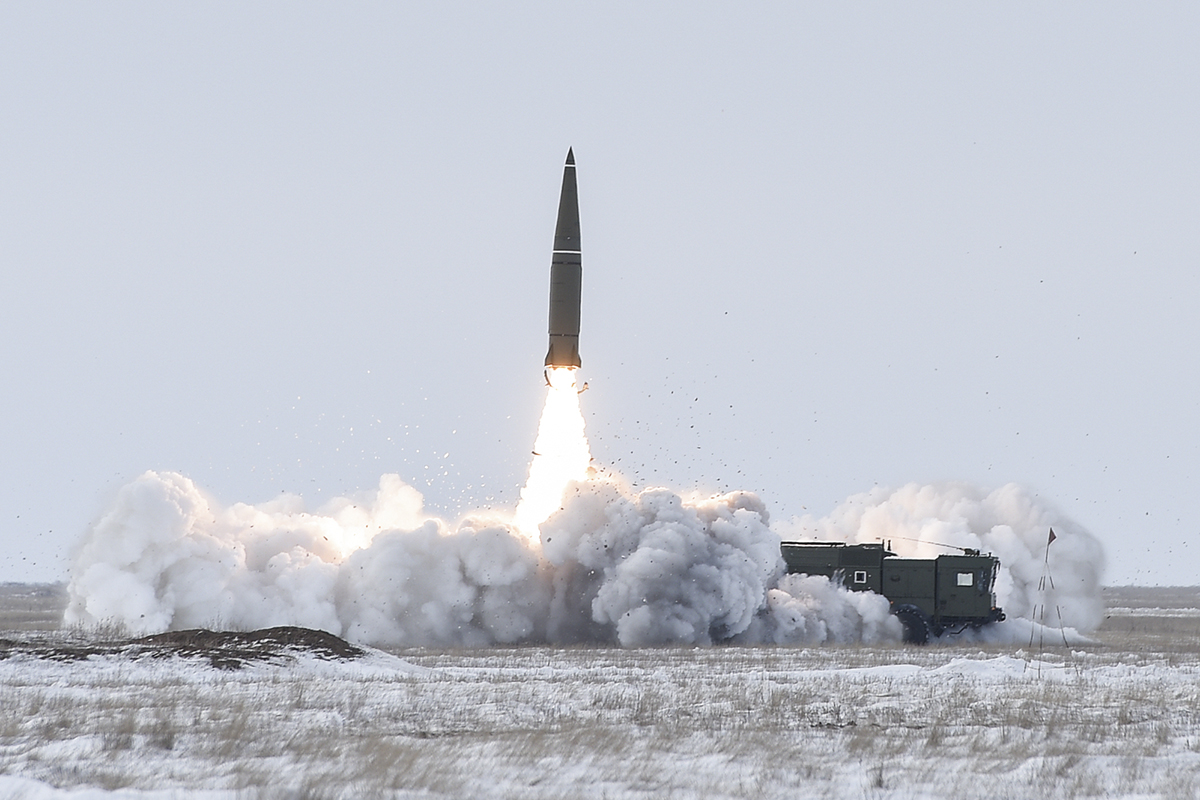Armenian Prime Minister Nikol Pashinyan sparked reaction in various countries with his confusing claims about Armenia’s usage of the Russian-made Iskander mobile short-range ballistic missile system against Azerbaijan last year, as well as its explosive force.
The statement was made as a response to criticism by country’s ex-president Serzh Sargsyan.
Last week, in an interview with local media, Sargsyan claimed that Armenia’s armed forces used the missile system against Azerbaijan during the 44-day war. According to Sargsyan, Armenia’s military used the Iskander targeting Shusha in the Karabakh region just a few days before Azerbaijan announced it has liberated the city. The former president further criticized Armenia’s Prime Minister Nikol Pashinyan, saying that the system should have been used at the beginning of the war.
PM Pashinyan was quick to react, admitting that Armenia do have used the Iskander, but the missile did not explode.
“I think that outcasted (Sargsyan) should not ask questions for which he knows answers. Or maybe he will answer why the Iskander missiles failed to explode or only exploded by 10 percent?” Russia’s TASS agency quoted the Armenian prime minister as saying.
Armenia’s defense ministry refused to interpret statements made by the prime minister.
At the same time, Russia’s defense ministry has dismissed these statements. Spokesperson to the ministry Igor Konashenkov said the remarks made by Armenia’s prime minister caused “bewilderment and surprise” in Moscow.
“According to the objective and reliable information that we have, confirmed by the system of objective control, none of the missile systems of this type were used during the conflict in Nagorno-Karabakh. All missile ammunition is in the warehouses of the Armed Forces of the Republic of Armenia. Apparently, the Prime Minister of the Republic of Armenia, Mr. Nikol Pashinyan, was misled, as a result of which he used inaccurate information,” Konashenkov said in a statement issued on February 25.
Meanwhile, Azerbaijan’s President Ilham Aliyev said that one needs to try hard so that only 10 percent of a missile explode, calling the Armenian prime minister's claims a lie.
“We have not seen the launch of the Iskander missiles. Therefore, when this statement was made again yesterday, we again became interested. But no, we have not seen that,” President Aliyev said while addressing media representatives on February 26.
The Russian-made 9K720 Iskander, which is also known as SS-26 Stone in NATO reporting name, is a road-mobile short-range ballistic missile (SRBM) with a range of up to 500 kilometers. The system deploys both 9M723 ballistic and 9M728/29 cruise missiles. The Iskander supports different conventional warheads such as a cluster munitions warhead, a fuel-air explosive enhanced-blast warhead, a high explosive-fragmentation warhead, an earth penetrator for bunker-busting, and an electromagnetic pulse device for anti-radar missions, as well as nuclear warheads.
Armenia received its first Iskander missiles from Russia in September 2016.
During the last year’s 44-day war in Azerbaijan’s Karabakh region, Armenia reportedly had at least 16 ballistic missile systems in service, including eight Elbrus (SS-1C Scud-B), four Tochka-U (SS-21 Scarab), and four Iskander (SS-26 Stone) rockets.
Armenia has continuously targeted densely populated cities and civilian areas in Azerbaijan with a missile fire during the hostilities.
Attacks on Ganja — Azerbaijan’s second-largest city with a population of over 500,000 situated far away from the battle zone — with Russian-made SCUD/Elbrus operative-tactical ballistic missiles killed 27 civilians and injured over 120 others.
According to data compiled by Human Rights Watch, Armenia’s forces used the prohibited Russian-made Smerch cluster missiles to attack residents of Barda city on October 27 and 28, 2020. As a result, some 27 civilians were killed and more than 80 injured in the two consecutive attacks on the city, which is home to 40,000 people and located 30 kilometers away from the battle zone.
The latest outbreak of war in the region started on September 27 last year after Armenia’s forces deployed in the occupied Azerbaijani lands shelled military positions and civilian settlements of Azerbaijan. The attacks triggered the Azerbaijani forces to take immediate counter-offensive measures for pushing back the assault. The war ended in a tripartite ceasefire statement signed on November 10 by Armenia, Azerbaijan, and Russia. By this time, Azerbaijani forces liberated more than 300 settlements, including the cities of Jabrayil, Fuzuli, Zangilan, Gubadli, and Shusha, from nearly 30-year-long illegal Armenian occupation. Armenia returned the occupied Aghdam, Kalbajar, and Lachin districts to Azerbaijan by December 1 as part of the obligations it took under the ceasefire deal.
Currently, a Russian contingent of 1,960 peacekeepers oversees the peace and adherence to the ceasefire agreement in Azerbaijan’s Nagorno-Karabakh region and the 5km-wide Lachin corridor.







 Azerbaijan’s historical biographical film “Taghiyev” has won the Best Feature Film award at the Dehancer Colorist Awards 2024. The film, which chro...
Azerbaijan’s historical biographical film “Taghiyev” has won the Best Feature Film award at the Dehancer Colorist Awards 2024. The film, which chro...
 Azerbaijan has been recognized as one of the safest countries in the world, ranking 90th among 163 countries on the Global Terrorism Index 2025 (GTI).
Azerbaijan has been recognized as one of the safest countries in the world, ranking 90th among 163 countries on the Global Terrorism Index 2025 (GTI).
 The Azerbaijani Defense Ministry has reported ongoing shelling of its army positions by Armenian forces since last week.
The Azerbaijani Defense Ministry has reported ongoing shelling of its army positions by Armenian forces since last week.



